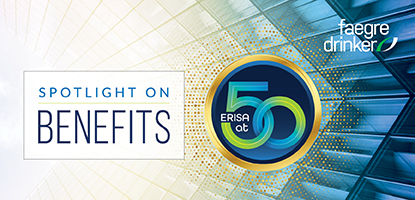A string of ERISA lawsuits has emerged in recent weeks against companies who offer BlackRock Target-Date Funds (“TDFs”) as 401k investment options to their employees. The lawsuits allege the companies, in their capacities as plan sponsors, breached their fiduciary duty by choosing the low fee investment options offered by BlackRock Inc., despite their funds’ underperformance. This new litigation sparks concern amongst 401k plan sponsors who may now have to worry about lawsuits involving investment fees from all sides-for choosing the high fee options and for choosing the low fee options.
The lawsuits focus on the LifePath Index Funds of BlackRock, a suite of 10 target-date funds. TDFs have increased in popularity over the past couple of years because they offer participants a lower fee but managed investment option based on target retirement years. Although BlackRock isn’t a party to the litigation, these lawsuits shine a spotlight on the performance of these funds.
The lawsuits allege the companies chose the BlackRock TDFs based on the low fees offered by BlackRock and failed to properly evaluate their investment returns. The suits claim that a proper evaluation of the funds would have resulted in the selection of better performing target-date funds and the failure to do so is a breach of fiduciary duty owed to plan participants. The comparisons made in the complaints assess the quarterly returns over a three-year and five-year period of the BlackRock Life Path Index Funds to those of Fidelity Freedom Index, Vanguard Target Retirement, American Funds Target Date Retirement (Capital Group) and T. Rowe Price Retirement. Based on this comparison, the plaintiffs argue that the BlackRock TDFs have produced a return on the lower end of the comparison.
Many argue BlackRock TDFs are not comparable to other fund options because they operate on different return paths. The BlackRock TDFs operate on a “to-retirement” glide path, whereas others operate on a “through-retirement” path. The difference? On a “to-retirement” glide path, the funds stop trading once the target date has been reached because it assumes participants will retire and leave the plan. On a “through-retirement” glide path, the funds continue operating because it assumes participants will continue working post retirement. The result is that the funds are managed differently and are expected to produce different market returns.
The problem with this Goldilocks tale is that it asks courts to determine if past returns should be the ultimate decision maker when selecting investment options. But ERISA does not require that plan fiduciaries predict the future, but merely choose and monitor investments in a prudent manner.
The material contained in this communication is informational, general in nature and does not constitute legal advice. The material contained in this communication should not be relied upon or used without consulting a lawyer to consider your specific circumstances. This communication was published on the date specified and may not include any changes in the topics, laws, rules or regulations covered. Receipt of this communication does not establish an attorney-client relationship. In some jurisdictions, this communication may be considered attorney advertising.

